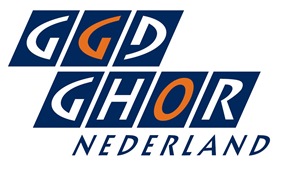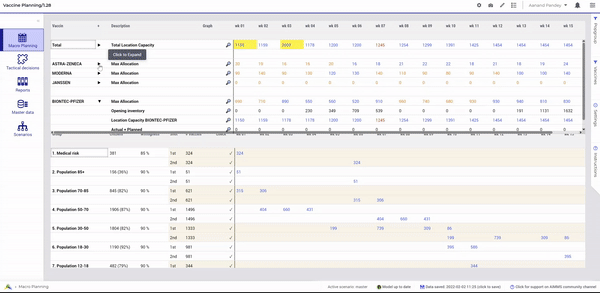
Like many government authorities around the world, The Netherlands Municipal Health Services (GGD-GHOR) faced a daunting task in early 2021. It was responsible for the process of vaccinating all Dutch adults over 18. Together with the Dutch government, the National Institute for Public Health and the Environment (RIVM) and other partners the limited supply of COVID vaccines had to be allocated across the country.
The health and safety of the entire population was at stake. Given the existing constraints, the Dutch Minister of Health issued the strategy of prioritizing high-risk groups, such as frontline health care workers and the elderly. Other age groups would follow in descending order.
This type of complex planning and allocation may be familiar to supply chain experts in commercial manufacturing and retail. However, rolling out an initiative of this scale for a government health organization is a different undertaking. Additional challenges included fluctuating vaccine supply, different vaccine storage and distribution requirements (expiration, cold storage). In addition, this effort involved opening and staffing vaccination centers to meet demand in the right locations at the right time. All of this took place during a turbulent environment in which public opinion and a very critical parliament were putting enormous pressure on the organization.
Theo Goutier, the project manager tasked with the GGD Vaccine Program Operations, shared his reflections with us about this period. Read on to hear about the lessons learned and the adjustments his team made over the past year.
In the Spring of last year, our challenge in the Netherlands was to get the public, in descending order of age (old to young) and high priority groups, vaccinated as quickly as possible. We had to do so while keeping supply availability from the vaccine manufacturers in mind.
To support this effort, different kinds of models and schedules were created. This provided each of the 25 GGD regions with a vaccine distribution plan and input into the number of appointment schedules needed per location. However, we had limitations in our ability to deal with the fluctuations in supply and demand. It was difficult to generate and assess multiple scenarios with our existing tools. We could not easily gauge the impact of the volatility in the supply of certain vaccines.
We enlisted experts at KPMG and QuoMare to help us enhance our existing planning method and capability. In a short amount of time, QuoMare was able to build a tool with scenario modeling using AIMMS optimization software. The tool helps our planning team:
The new planning tool also enabled us to solve some existing puzzles. For example, for some time one of our vaccination locations seemed to be underperforming (based on simple average utilization ratio). Demand was difficult to predict.
Using the new AIMMS-based tool, we were able to see insights at a greater level of detail, faster than ever before. This led to our discovery that the low utilization was due to the specific demographic makeup (skewed younger i.e. students), not a lack of demand. There were simply more people in the younger age group in that region who were not yet eligible to get vaccinated.
“Using the new AIMMS-based tool, we were able to see insights at a greater level of detail, faster than ever before.”
Because the new tool allowed us to forecast by age group and by region and look further ahead, we were able to predict that this location would shortly experience peak demand in a few weeks. This enabled us to scale up staff in time and avoid unnecessary delays in the vaccination campaign.

In the Fall of 2021, discussions about vaccine boosters were underway, but no concrete decision was made yet on whether boosters would be required. Our team was able to map out various possibilities and created 18 different scenarios modeling the execution of booster campaigns. At that time, many of the vaccine location lease contracts were expiring. The analysis enabled us to renew leases with key locations in a timely way. This resulted in quick ramp up and distribution once the booster vaccine was announced by the Department of Health.
Our planning team has been using the planning tool for over six months. Some examples of what our team is now able to do include:
GGD GHOR Nederland expects that the planning tool will continue to be very useful for operations and believes it can also be helpful to other government and health organizations facing the same challenges.
If you are a non-profit organization who is interested in getting access to a vaccine planning and allocation tool, Math4Good has a similar application available for you to use.